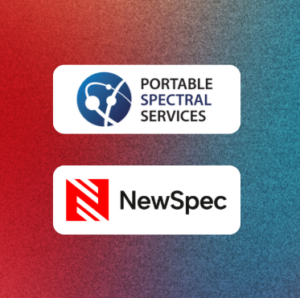
A Bright Future Ahead
Portable Spectral Services Announces Exciting Management Transition
Geochemical visualization of identified chemical trends is challenging during exploration when data is limited. While geochemical assay datasets are highly valuable, the use of visual tools can often simplify the ability to identify and track chemical and mineralogical trends and display the key characteristics of an exploration target to a wider audience. To quote American mathematician John W. Tukey “The greatest value of a picture is when it forces us to notice what we never expected to see”.
When tackling questions such as, where? how? and when? with regards to elements of interest, the data must provide the ability to answer these questions. The M4 TORNADO software enables the visual scanning of samples, which can be integrated with other datasets to help provide the information required to answer these questions and fully understand an exploration target.
Figure 1 Series of element distribution map overlays of a Ni-Cu-PGM deposit. (a) Scanned area of sample. (b) Internal Cr zoning (c) Chemical variation in silicates. (d) Monosulphide solid solution (MSS) texture.
The powerful use of simple element distribution map overlays (Fig. 1) enables the ability to assess elemental relationships, spatial association, textures, zonation, and mineral identification. Chemical zoning in the clinopyroxene is visible using a Ca and Cr overlay map (Fig. 1b), with zones of chrome rich interiors. The plagioclase feldspar (pink) in the Mg-Al-Si-K map overlay (Fig. 1c) shows the loss in aluminum within the grains. Grainsize of the clinopyroxene (blue) and plagioclase (pink) increases towards the sulphides, with clinopyroxene forming large, poikilitic grains that enclose olivine (green) and plagioclase in typical ophitic texture. Textural intergrowth of the pentlandite (green) with chalcopyrite (purple) and pyrrhotite (brown) shows the monosulphide solution series (Fig. 1d and 2), typical of Norilsk, with varying concentration of Cu and Ni concentration, exsolution textures and titanium oxide intergrowth. These textures can be seen clearly across the range of grain sizes from 1 to 10 mm. Cores of the Ni-rich pyrrhotite grains shows exsolution developed oriented lamellae, with a pentlandite rim at the boundary of these pyrrhotite grains and are intergrown with chalcopyrite. Both figures show sulphide intergrowth with ilmenite (red), with ~1-2 mm ilmenite grains identified in Figure 1 and 1 – 4 mm grains identified in Figure 2.
This provides an insight into the chemical information that can be collected by the Bruker M4 TORNADO at the multi-micron scale. With an X-ray beam spot size of ~25 μm with variable resolution, quick analysis due to on-the-fly measurements provides chemical information mapped at a multi-micron scale. Utilising the quick analysis times large range of elements, a maximum scan area of 19 x 16 cm provides the ability to analyse the distribution and interactions between dominant phases, along with elemental distribution within a phase or phase boundary. Bridging the gap between the restricted small scale of Electron Microscopy (SEM) and generalised whole rock analysis. These element maps reveal spatial relationships and patterns, offering the user insight into mineral composition and the distribution of elements of throughout these phases.
Figure 2 Sample from an Ni-Cu-PGM deposit highlighting monosulphide solid solution (MSS) and Ti intergrowth portrayed with S-Ni-Ti-Cu element map overlay.
• Show the spatial distribution of elements in various minerals.
• Create element distribution map overlays, comparing different elements over the same area can help to determine what phases are present.
• Visualize chemical zonation within minerals
• Element maps can then be compared to other mineralogy methods to fully evaluate the mineral phases present.
• Element maps can be used to locate microscale (<20 microns) grains of interest e.g. Au and PGEs
For more information on micro-XRF spectroscopy visit www.microxrf.com.au/. Learn more information on the Bruker M4 TORNADO micro-XRF.
If you are interested in having your own sample analysed by micro-XRF, contact Portable Spectral Services at [email protected]
Read part two now!

Portable Spectral Services Announces Exciting Management Transition
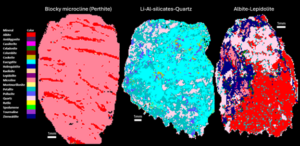
Our tool introduces uXRF (micro-X-ray fluorescence) scanning technology to RC chip analysis, enabling rapid, non-destructive, and quantitative analysis of major, minor, and trace mineral phases.
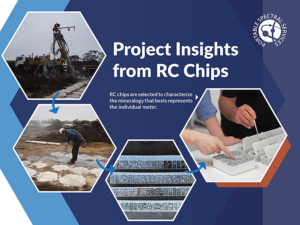
Automated micro-X-ray fluorescence (micro XRF) technology emerges as a powerful tool to rapidly and accurately capture the mineralogy of rock chip, RC and AC samples.

Findings of an ongoing regional evaluation study over concealed Proterozoic lithologies known to host magmatic nickel sulphides with potential to host other base-metal, gold and rare earth elements (“REE”) systems within the Fraser Range, Western Australia.
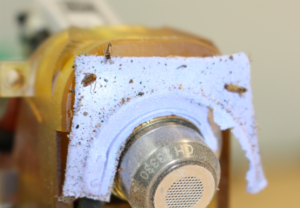
Findings of an ongoing regional evaluation study over concealed Proterozoic lithologies known to host magmatic nickel sulphides with potential to host other base-metal, gold and rare earth elements (“REE”) systems within the Fraser Range, Western Australia.
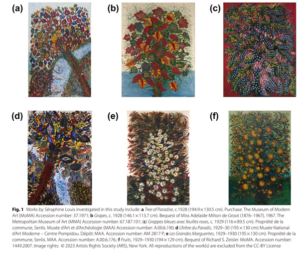
Findings of an ongoing regional evaluation study over concealed Proterozoic lithologies known to host magmatic nickel sulphides with potential to host other base-metal, gold and rare earth elements (“REE”) systems within the Fraser Range, Western Australia.
